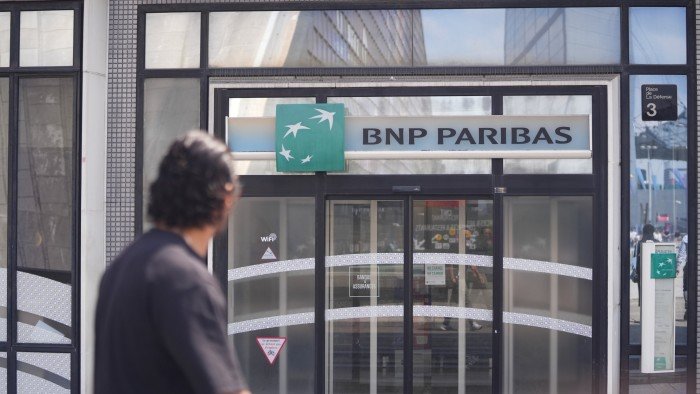Unlock the Editor’s Digest for free
Roula Khalaf, Editor of the FT, selects her favourite stories in this weekly newsletter.
Bond market mayhem over the past few months has been a boon for investment bankers. Traders are enjoying their highest levels of revenue in more than a decade. But the rise of bond vigilantes — investors who theoretically discipline fiscally profligate governments — is also helping the fustier world of retail banking.
In theory, lenders’ profitability should be on the way down. Products such as mortgages are often tied to central bank rates, which are falling in the Eurozone and the UK. KBW estimates that a 1 percentage point across-the-board drop in interest rates would knock 7 per cent from sector-wide profits.
But unpredictable US trade policy and radical spending plans in Europe have driven up longer-term borrowing costs, even as the European Central Bank and Bank of England cut their benchmark borrowing rates. The yield on the two-year German Bund has dropped 1.2 percentage points since the ECB’s first cut last June, but the 10-year Bund yield is flat over the same period. That should help limit the decline in commercial banks’ profit margins.

At its most simple, a bank’s business model is to borrow short-term and lend long-term, so a wider gap between short- and long-term rates — a steeper yield curve, in markets jargon — means higher potential profits. For much of the past decade, the gap has been small or even negative — known as an inverted curve — due to weak long-term growth expectations.
The return to a more normal curve makes things easier for lenders. Before the Bank of England’s first rate cut, the gap between what a lender would typically earn on a £10,000 personal loan and what they would pay out on a two-year fixed savings account was just under 2.4 per cent, based on Lex calculations. By the end of April, that margin had risen to 2.8 per cent, with the rate on personal loans rising and that on savings accounts falling.

In reality, the process for large banks — which manage massive portfolios of interest rate swaps to smooth out their earnings — is more complicated, but the end result is the same: higher profit margins. Banks including BNP Paribas, CaixaBank and Lloyds have all highlighted the potential upsides in recent weeks.
A steepening yield curve suggests that analysts’ forecasts are too bearish. The net impact of central bank cuts may still be negative, but analysis by KBW estimated that if short-term rates fall while long-term rates remain steady, the hit to bank revenue is reduced by about a third compared with a parallel move. If long-term rates rise, the pain is even less.
The Stoxx 600 banks index has already risen 30 per cent this year, but even after the climb it is trading at less than nine times forecast earnings for the next 12 months. With earnings estimates likely to increase, bank stocks could rise further without stretching valuations — thanks to a bit of help from those bond vigilantes.

